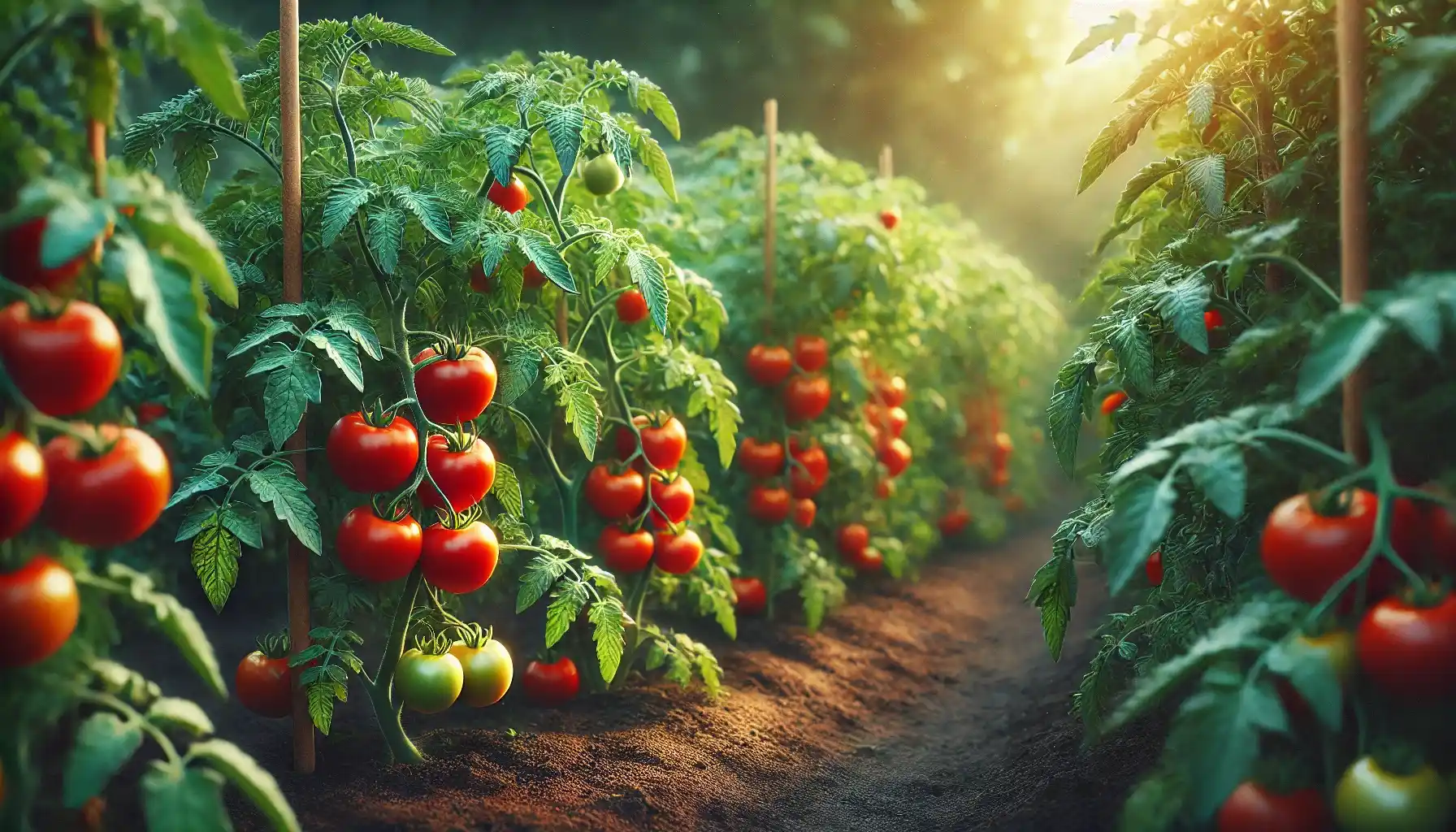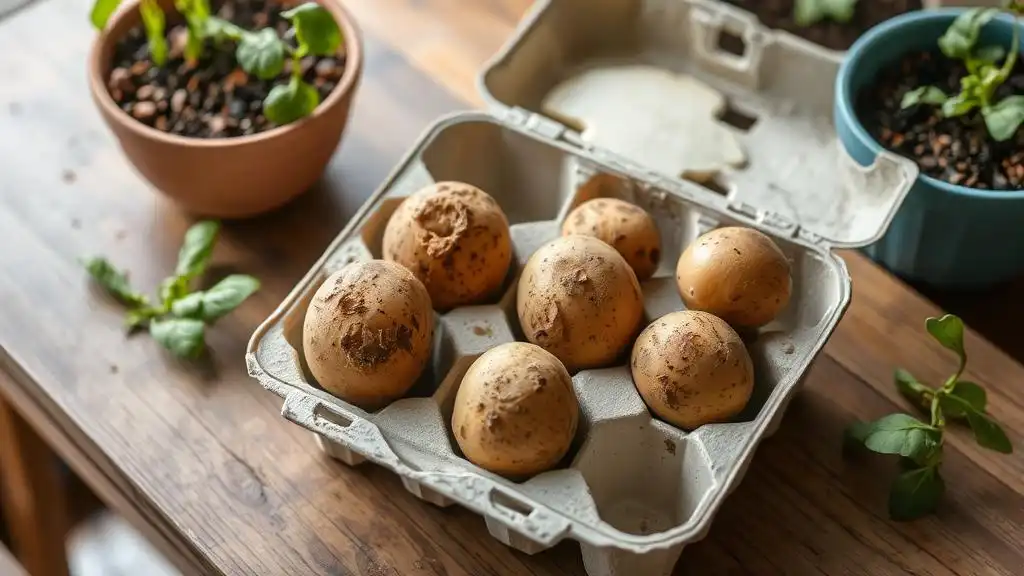Homegrown Tomatoes: Advanced Tips and Requirements

What could be better than having fresh and delicious vegetables served right from your garden? As the media promotes, growing tomatoes at home is a relatively straightforward process that requires little effort but strong will and profound guidance at first. Nevertheless, it might be a bit more complex to grow tomatoes, especially for beginner gardeners.
Contents:
What could be better than having fresh and delicious vegetables served right from your garden? As the media promotes, growing tomatoes at home is a relatively straightforward process that requires little effort but strong will and profound guidance at first. Nevertheless, it might be a bit more complex to grow tomatoes, especially for beginner gardeners.
Do tomatoes like acidic soil? What are the main requirements for them to efficiently produce crops and thrive? Do onions and tomatoes grow well together? Let us address these concerns and learn the guidelines for growing a wholesome vegetable garden at home.

Tomato Types
There are dozens of tomato species different in size, color, and flavor that may be grown in your vegetable garden. In general, they all fall into several categories, e.g., determinate/indeterminate and hybrid/heirloom tomatoes.
Determinate vs. Indeterminate Tomatoes
Tomatoes, like other plants, may be characterized by their growth habits. Determinate tomatoes have a predetermined growth pattern, which means that they reach a specific height and set fruit within a relatively short period. This type of tomatoes is perfect for smaller spaces or container gardening, for they produce a concentrated harvest all at once.
Indeterminate tomatoes, on the other hand, continue to grow and produce fruit during the growing season until frost. So as to help them grow and stay healthy, one should take action to prune and support the plant with the use of stakes, cages, or trellises.
Hybrid vs. Heirloom Tomatoes
This categorization is the product of a constantly developing agriculture that aims to create more “appropriate” vegetables with specific traits, like uniformity in size and flavor, for humans to grow and consume. Hence, hybrid instances emerge as a result of cross-breeding tomato plants that are usually used in commercial production. Heirloom tomatoes, though, are unique natural creations that always come in a variety of peculiar forms, sizes, and flavors, which makes them an ideal option for domestic use.
Plant Care Requirements
When it finally comes to planting tomato seeds, one may wonder “Do tomatoes like acidic or alkaline soil?” or “What pH do tomatoes prefer?”. The most vital requirement that should be necessarily met is the optimal soil condition. Let us see what exactly tomatoes need to thrive and produce fruits.
As a rule, tomatoes thrive in a relatively moist and well-draining soil that allows excess water to move away from the root zone. This is extremely important as waterlogged or compacted soil can lead to root rot and other issues. Besides, as a heavy feeder, a tomato plant needs soil full of nutrients, such as nitrogen, phosphorus, calcium, magnesium, and potassium.
Do tomatoes need acidic soil? As for pH level, tomatoes prefer slightly acidic to neutral soil with a pH range between 6.0 and 6.8. So as to determine the pH of your soil, conduct a test on a soil sample and see if it is needed to use amendments like lime to raise pH or elemental sulfur to lower pH.
By the way, do not forget about mulching and fertilizing! Organic fertilizers may provide the soil with the lacking nutrients, while applying a layer of organic mulch, e.g., straw or shredded leaves, may help conserve a sufficient level of moisture and regulate its temperature, too.

Best Companion Plants for Tomatoes
To grow tomatoes efficiently, one may consider a more complex approach that involves companion planting. What does this mean? Companion planting is a technique that presupposes intentionally growing certain plants together to enhance each other’s growth, health, and productivity. Such collaboration may improve soil fertility, control pests and diseases, and even increase pollination.
The most common inquiry comes as follows: “Do tomatoes and basil grow well together?”. Yes, indeed, basil does grow well with tomatoes and other plants, for it deters pests, such as aphids and spider mites, and even enhances the flavor of fruits. In this case, what is a good combination on a plate makes a great collaboration in the garden.
Among other plants that can complement tomatoes on the patch is onion. Onions serve as natural pest repellent that also averts harmful insects and other organisms, hence reducing the need for chemical pesticides.
To improve soil fertility and health, one can plant legumes like beans and peas to provide extra nitrogen, an essential nutrient for fruitful plant growth. Planting nitrogen-fixing cover crops or intercropping with legumes can help replenish soil nutrients and improve overall soil health.
Flowers like borage and calendula may successfully attract pollinators, which aid in the transfer of pollen between tomato plants. Although tomatoes do not generally require pollination, this may enhance the quality and quantity of fruits produced by a plant further.
Pro Tip for Gardeners – AI Plant Finder as Your Personal Assistant
Most people struggle to start their gardening journey for different reasons, be it a fear of not coping with a situation or a lack of botany knowledge. Fortunately, there are a number of digital tools available to make planting enjoyable and easy, and AI Plant Finder is probably one of the best options possible.
AI Plant Finder is a new yet promising platform for plant lovers of all levels and aspirations. Want to identify plants around or seek guidance in terms of plant care? Been wondering if tomatoes do like alkaline soil? All you need to know about gardening procedures is gathered in one digital space by a team of committed plant enthusiasts, scientists, and developers, who have experienced the same issues and want to help others.

The app offers the most necessary tools for passers-by to educate themselves via the app and gardeners to keep their yards healthy all the time:
Identify the member of flora with just one snap via the app’s “Plant ID” feature. Take a picture and learn more about the plant species with AI Plant Finder.
Detect what is wrong with your plants with “Disease ID”. Identify problems and explore possible solutions to treat your plant as soon as possible.
Keep track of your plants in “My Garden” and set up Plant Care Reminders to get alerted when they need watering, pruning, rotating, and the like.
Get instant feedback from an AI Botanist who is always eager to guide you through the most complex problems and suggest relevant solutions.
Calculate how much water and light your plant needs to stay healthy and thrive in the end.
Communicate with like-minded plant lovers and share your experience with the world!
Tomato cultivation becomes more or less simple when one takes action and prepares in advance. Understanding the array of tomato species and what they need to grow efficiently is the essential step before the actual planting. To make this experience even more painless, employ modern technologies and platforms, like AI Plant Finder, and never miss a chance to educate yourself!
Share:
Read More
Identify Any Plant, Diagnose Every Disease
Download Our App Now!


